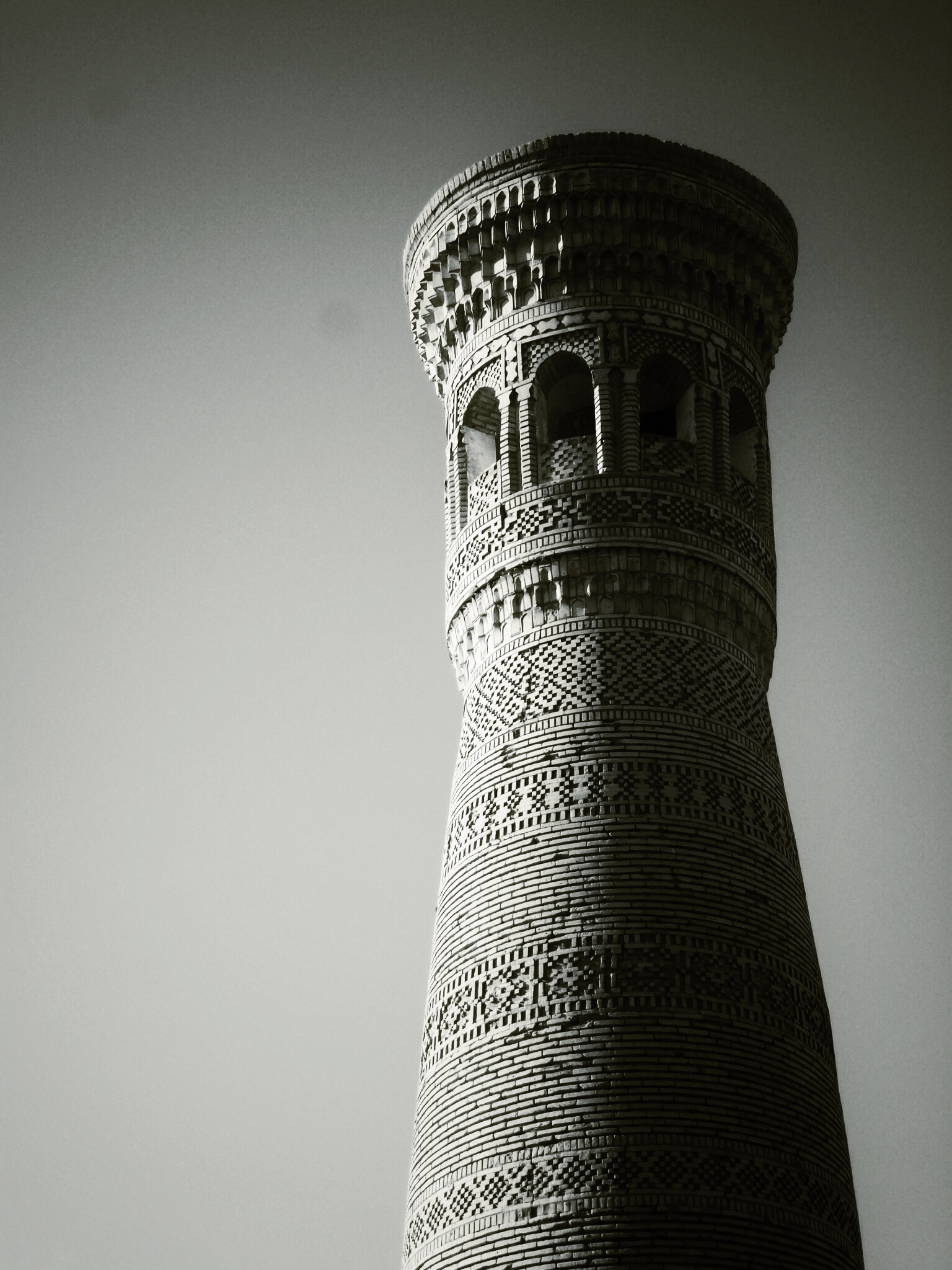TOM HERRING captures some of the exquisite architecture and moments of human interaction he saw on his travels around Uzbekistan.
On the edge of the Samani Park in Bukhara is one of the city’s oldest buildings. The Ismail Samani Mausoleum dates from approximately 905: intricate terracotta brickwork with walls two meters thick. This photo was taken in the early evening when the heat of the day had passed. A couple of stray puppies were play-fighting near us and the air thick with birdsong and the yells of excited children. I was captivated by the reflection of the mausoleum and the way the ripples distorted its edges into a fluid visual echo. The building has existed for over a thousand years both in its solid physical form and the in its shimmering reflection in one of the city’s ancient manmade pools.
One of many carpet workshops in Khiva: three young women sat weaving in the corner; observed by an older woman, they paid us no attention. The wooden canopy over the courtyard created a dizzying pattern on the brickwork and already mesmeric carpet designs. This workshop is where Chris Aslan Alexander worked and is the setting of much of his book A Carpet Ride to Khiva: Seven Years on the Silk Road, a must read for anybody interested in Central Asia and Uzbekistan in particular.
In the winter of 1415 the emperor Tamerlane died whilst planning an attack on China. His body was returned to his capital, Samarkand, where he was laid to rest in the recently built Gur-E-Amir mausoleum which already housed his grandson who had died the previous year. This intricate pattern-work is at the top of one of the four arches which frame the centre of the building where the tombs lie. Tamerlane’s is a six-foot slab of extremely valuable black jade. This is the most awe-inspiring space I’ve ever experienced: there is a heavy silence as if the atmosphere itself is marvelling at the intense beauty of the architecture.
The less famous but, in my view, more beautiful of the two towers of Bukhara. This minaret belongs to the Khodja Kalon Medressa which overlooks one of the city’s pool-centred squares. The light on the terracotta brickwork brings out its intricacies, making this one of the most photogenic structures in Uzbekistan. A nearby photo gallery included several pictures of the square covered in snow: a scene practically unimaginable for us at the time, struggling as we were in the near 40 degree heat.
A young girl runs to catch up with her older sister along one of the ancient streets of Khiva. From the top of the Juma Minaret you can see the entirety of the perfectly preserved old town with its many Medressas, workshops and mausoleums. I was keen to capture as many ‘moments’ as possible and this familiar scene between to two young girls – I presume sisters – is one of my more successful efforts. I love the way the shadows overlap almost forming a single larger figure. The older sister’s bold stride and the frantic flailing of her sibling’s arms give the image motion. Their urgency contrasts with extreme stasis of their surroundings which have been the same for a thousand years.
A common scene all over the world: three elderly men apparently considering the essence of life, when they are probably just telling limericks. This is another one of my attempts to capture a dramatic moment. The man on the right was speaking animatedly in Uzbek whilst his friends listened with apparent scepticism. The pose of the man on the left is particularly striking as he looked across the park towards the magnificent Ark, the centrepiece of Bukhara’s historic monuments. These men lived through Soviet occupation and are part of the generation that paradoxically struggled once they were rid of their oppressors. Again, the reflection adds significance to the image: their faces become blurred invoking the notion that they are representative of millions who lived through harsh times and who still find themselves, despite the apparent improvement of regime, abandoned.










